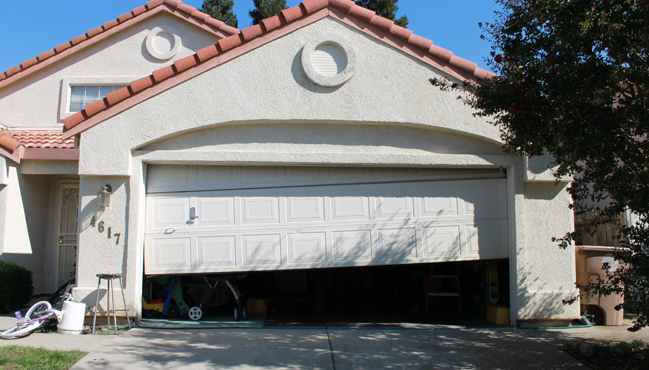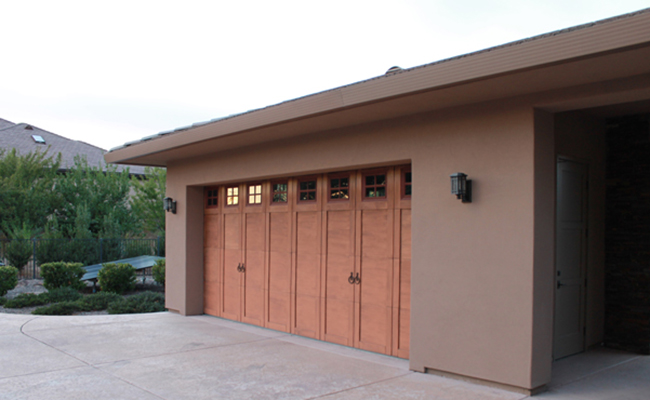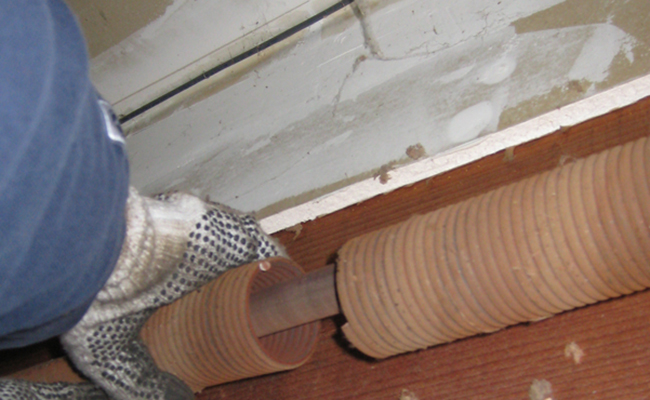Garage doors are constantly exposed to the elements, and the weather can have a significant impact on their performance and longevity. Different weather conditions, such as extreme heat, cold, humidity, and storms, can cause wear and tear on your garage door over time. For instance, excessive heat can cause the metal components of the door to expand, leading to warping or misalignment. On the other hand, cold temperatures can cause the door’s springs and cables to become brittle, increasing the risk of breakage.
Additionally, humidity and moisture can lead to rust on metal parts and the growth of mold or mildew on wooden garage doors. Storms and high winds can also pose a threat, potentially causing physical damage or forcing water and debris into the garage. Understanding how various weather conditions affect your garage door is crucial for maintaining its functionality and preventing costly repairs. By staying proactive with seasonal maintenance, you can protect your garage door from the harsh effects of the weather.
Spring Maintenance Tips: Preparing for Rain and Humidity
Spring is a time of increased rainfall and humidity, which can be particularly challenging for garage doors. To prepare for these conditions, start by inspecting the weatherstripping around your garage door. Weatherstripping helps seal the door against moisture, preventing water from seeping into your garage. If you notice any cracks, gaps, or signs of wear, replace the weatherstripping immediately to maintain a tight seal.
Another important task during spring is to check the door’s metal components for signs of rust. Rust can quickly spread and weaken the door’s structural integrity, so it’s essential to address it early. Use a wire brush to remove any rust spots, then apply a rust-inhibiting primer and touch-up paint to protect the metal. For wooden doors, inspect for any signs of water damage or rot, and apply a fresh coat of waterproof sealant if necessary. Regular lubrication of the moving parts, such as hinges and rollers, will also help ensure smooth operation despite the increased humidity.
Summer Maintenance Tips: Combatting Heat and Sun Exposure
Summer brings intense heat and prolonged sun exposure, both of which can take a toll on your garage door. The heat can cause the door’s metal parts to expand, leading to warping or misalignment, while the sun’s UV rays can cause the door’s finish to fade or crack. To combat these effects, start by inspecting the door for any signs of warping or bending. If you notice any issues, adjust the tracks or hire a professional to ensure the door is properly aligned.
To protect your garage door’s finish from UV damage, consider applying a protective coating or paint designed to resist fading. This is especially important for wooden garage doors, which are more susceptible to cracking and splitting due to sun exposure. Additionally, check the garage door’s insulation to ensure it’s in good condition. Proper insulation helps regulate the temperature inside your garage, reducing the strain on your home’s cooling system and keeping your garage more comfortable during the summer months.
Fall Maintenance Tips: Getting Ready for Colder Weather
As the weather cools down in the fall, it’s time to prepare your garage door for the challenges of winter. One of the most important tasks is to inspect the door’s springs and cables. Cold weather can cause these components to become brittle, increasing the risk of snapping or breaking. If you notice any signs of wear or if the springs feel loose, it’s a good idea to have them inspected and possibly replaced by a professional before winter arrives.
In addition to checking the springs and cables, make sure the door’s tracks and rollers are clean and free of debris. Leaves, dirt, and other debris can accumulate in the tracks during the fall, leading to poor operation or even causing the door to become stuck. Clean the tracks thoroughly and lubricate the rollers to ensure smooth movement. Finally, inspect the weatherstripping around the door to make sure it’s still intact and effective at sealing out the cold air. Replacing worn weatherstripping will help keep your garage warm and energy-efficient throughout the winter.
Winter Maintenance Tips: Protecting Against Cold and Ice
Winter can be particularly harsh on garage doors, with freezing temperatures, ice, and snow all posing potential problems. To protect your garage door during the winter months, start by ensuring the door’s weatherstripping is in good condition. This will help keep cold air, snow, and ice from entering your garage, making it more energy-efficient and comfortable. If you live in an area prone to heavy snowfall, make sure to clear snow and ice away from the bottom of the door regularly to prevent it from freezing shut.
It’s also important to lubricate the door’s moving parts more frequently during the winter. Cold temperatures can cause the door’s metal components to contract, leading to increased friction and potential wear. Use a high-quality, cold-weather lubricant on the door’s hinges, rollers, and tracks to keep them moving smoothly. Additionally, if your garage door has a manual lock, check that it’s functioning properly, as freezing temperatures can cause locks to seize up. Lastly, inspect the door’s springs and cables for any signs of damage, as cold weather can make these parts more prone to snapping.
General Maintenance Tips for Year-Round Care
While it’s important to address specific weather-related challenges each season, some maintenance tasks should be performed year-round to keep your garage door in top condition. Regularly cleaning your garage door is one of the simplest yet most effective ways to maintain its appearance and prevent long-term damage. Use a mild detergent and water to clean the door’s surface, removing dirt, grime, and salt that can lead to corrosion.
In addition to cleaning, make it a habit to check the balance of your garage door every few months. A properly balanced door should stay in place when lifted halfway. If it moves up or down, the springs may need adjustment. Lastly, ensure that your garage door opener is functioning correctly by testing it periodically. Replace the batteries in the remote control as needed and keep the opener’s sensors clean and aligned. By staying on top of these maintenance tasks, you can extend the life of your garage door and avoid costly repairs.
Conclusion
Weather can have a significant impact on the performance and longevity of your garage door, but with regular seasonal maintenance, you can protect your door from the elements and ensure it continues to function smoothly. By addressing the unique challenges of each season—whether it’s combating rust in the spring, protecting against heat in the summer, or preparing for cold weather in the fall and winter—you can keep your garage door in excellent condition year-round. Regular care and attention will not only extend the life of your garage door but also enhance the overall safety and efficiency of your home.








